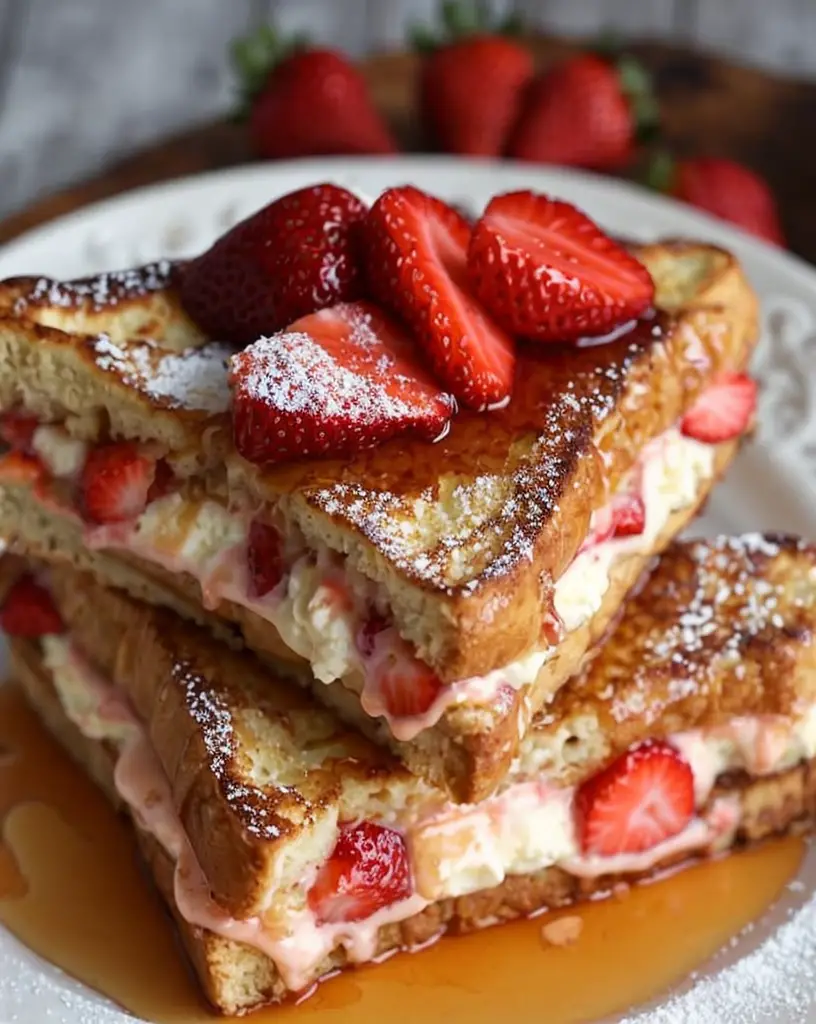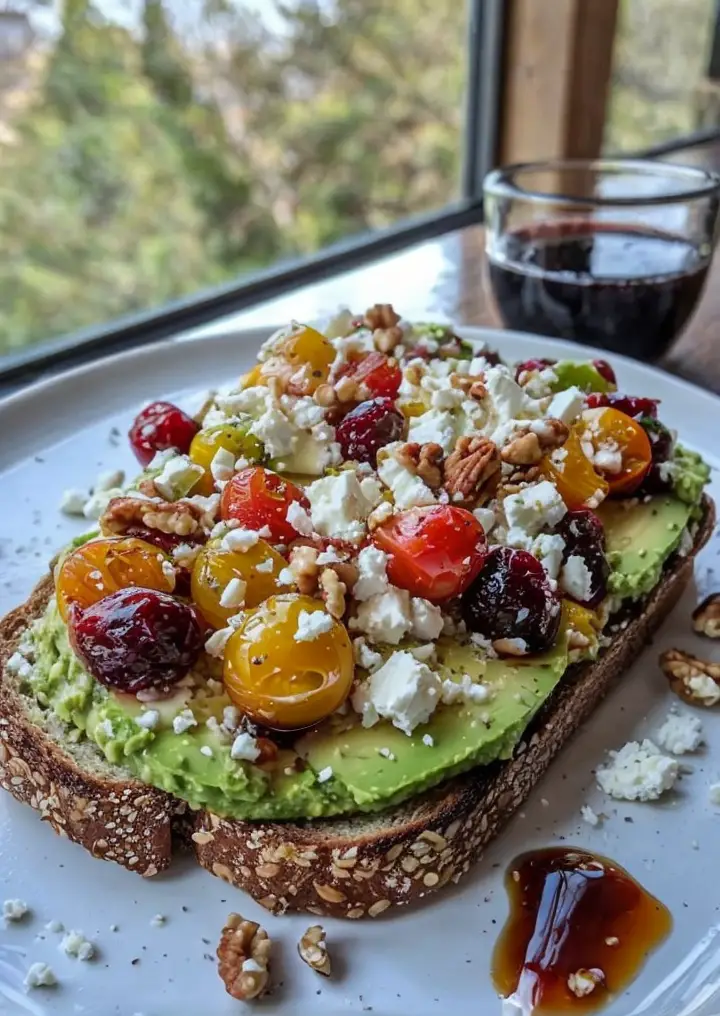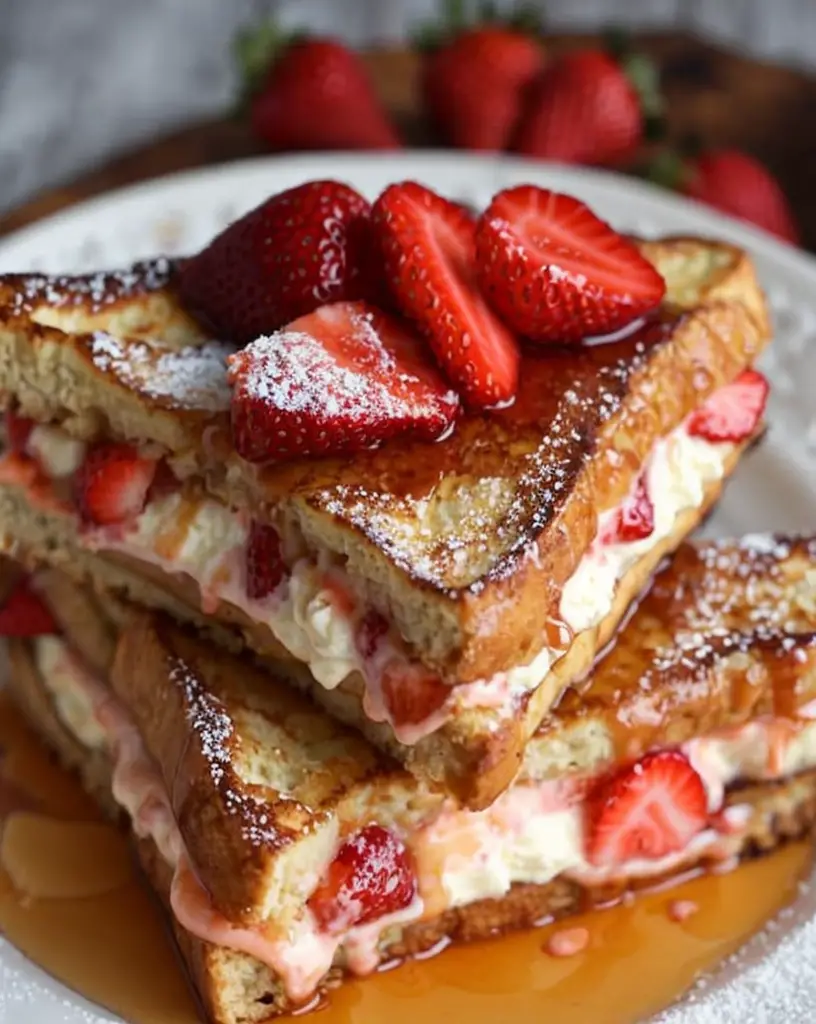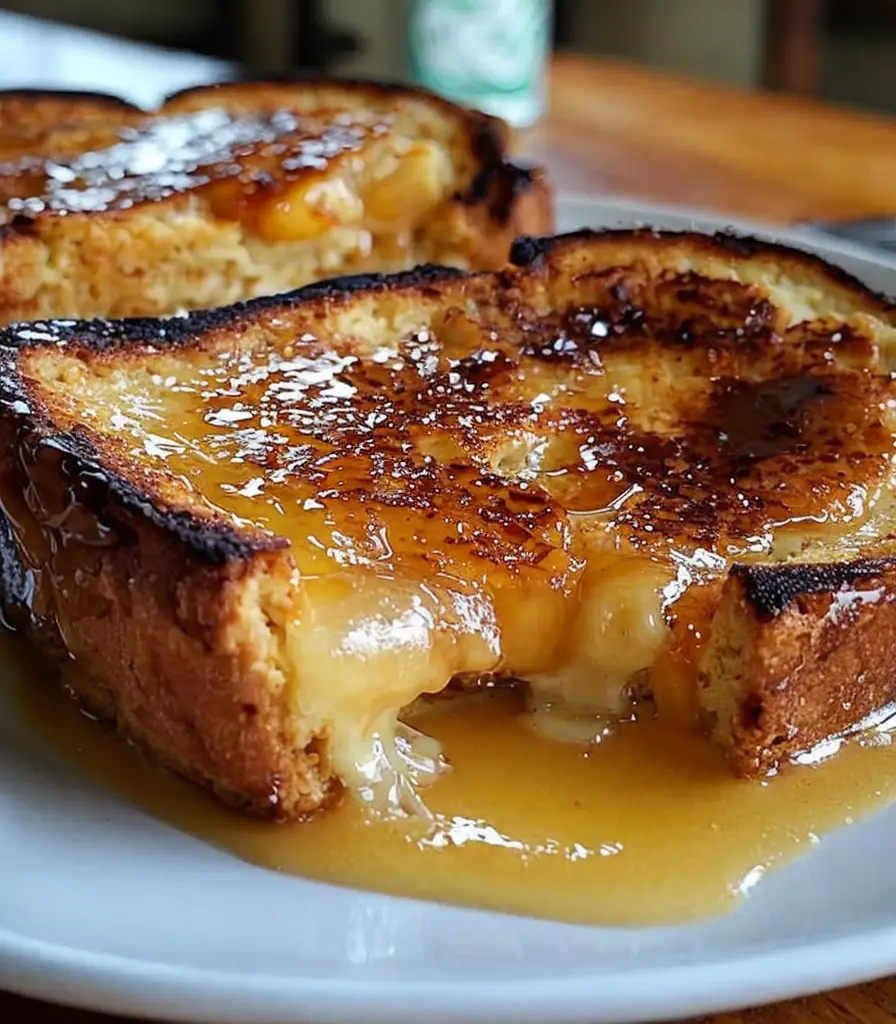Homemade Cinnamon Donut Bread Recipe | Easy Sweet Breakfast
Indulge in the delightful sweetness of our Homemade Cinnamon Donut Bread, a perfect treat to brighten your breakfast table. This easy sweet breakfast recipe combines the classic flavors of cinnamon donuts into a luscious bread, making it an unbeatable morning companion. Whether you’re enjoying it with your morning coffee or serving it as a special treat for guests, each slice offers a cozy hug of warmth and nostalgia. The irresistible cinnamon sugar topping adds a sweet crunch, perfectly balanced with the soft, fluffy texture of the bread.
The beauty of this Cinnamon Donut Bread lies not only in its taste but also in its simplicity. Perfect for weekend brunches or a sweet pick-me-up on weekday mornings, this recipe showcases the charm of homemade goodness with minimal effort. Imagine pulling a warm loaf from the oven, its sweet aroma wafting through your kitchen, as you slice through its golden crust. Each bite is a reminder of childhood breakfasts filled with joy and comfort, making it a recipe you’ll return to time and again.
Quick Recipe Highlights
- Flavor Profile: Sweet and spiced with notes of cinnamon and sugar, reminiscent of classic donuts.
- Texture: Soft and fluffy with a crumb that melts in your mouth, complemented by a crispy, sugary topping.
- Aroma: Warm, inviting scents of baked cinnamon and sugar will fill your kitchen.
- Visual Appeal: Gorgeous golden brown crust topped with glistening cinnamon sugar makes for a stunning presentation.
- Skill Level Needed: This recipe is beginner-friendly, ideal for those who may not have extensive baking experience.
- Special Equipment: All you need is a mixing bowl, loaf pan, and basic baking tools.
Recipe Overview
- Difficulty Level: With straightforward steps and easily manageable ingredients, this recipe is great for beginners and seasoned bakers alike.
- Category: This Homemade Cinnamon Donut Bread fits perfectly into breakfast, brunch, or even a sweet snack category.
- Cuisine: Rooted in American baking traditions, it draws on classic donut flavors and transforms them into a loaf.
- Cost: The ingredients are affordable and commonly found in most kitchens, making it a budget-friendly option.
- Season: Perfect for any season, this bread can be a delightful centerpiece for holiday gatherings or cozy winter mornings.
- Occasion: Ideal for birthday brunches, casual get-togethers, or simply enjoying a slice during a quiet coffee break.
Why You’ll Love This Recipe
This Homemade Cinnamon Donut Bread combines the perfect balance of sweet and spice, delivering a flavor that is comforting and nostalgic. Each slice is bursting with cinnamon goodness that warms the soul. The texture is incredibly soft, yet the crunchy topping provides a satisfying contrast, making it impossible to eat just one piece. Not only does it taste fantastic, but it also fills your home with an irresistible aroma while it bakes, creating an inviting atmosphere for family and friends.
The convenience of this recipe can’t be beaten. It requires minimal prep time and can be baked in just one bowl, simplifying the process and making cleanup a breeze. You can easily whip this up in the morning or prep it the night before, allowing you to enjoy a freshly baked loaf any day of the week. Furthermore, the ease of slicing means you can serve portions effortlessly, making it perfect for gatherings or lazy Sunday breakfasts.
Nutritionally, this bread boasts simple ingredients that provide comfort without excessive guilt. You can incorporate whole grain flour for added fiber or reduce sugar for a healthier twist while maintaining its delectable taste. It’s a delightful balance of indulgence and nourishment, ensuring you won’t feel weighed down after enjoying a slice.
This recipe shines during social occasions; it’s an ideal centerpiece for brunch tables and potlucks. Your guests will be enthralled with its delightful flavors and textures, making it a memorable treat. The sweet cinnamon hint captures the essence of a friendly gathering, fostering connections and conversations around the breakfast table.
Finally, Homemade Cinnamon Donut Bread is incredibly cost-effective. With basic pantry staples and minimal ingredients, you can create an impressive dish for a fraction of the price of store-bought options. Its accessibility encourages everyone to embrace their inner baker—bringing the amazing flavors of traditional donuts into the comfort of their homes.
Historical Background and Cultural Significance
The origin of cinnamon bread can be traced back to the rich baking traditions of Europe, where sweet breads were often enhanced with spices such as cinnamon, nutmeg, and cloves. With time, various regional interpretations emerged, blending local traditions into delightful baked goods. This bread pays homage to those age-old recipes while creating something uniquely comforting.
Cinnamon itself holds a special place in culinary history; once considered a luxury item, it was worth its weight in gold. Its warmth and flavor have long been celebrated and are closely tied to festive and familial gatherings. The emergence of donut-inspired treats, such as this bread, showcases how cultural influences and culinary traditions meld to create something exquisite.
As seasons passed, this recipe evolved, becoming more mainstream. The twist of turning classic donut flavors into a bread format allows for versatility; whether enjoyed fresh from the oven or toasted and slathered with butter, the options are endless. This evolution caters to present-day preferences for convenience and flavor.
Regional variations also exist, with some incorporating chocolate chips or toasted nuts to enhance flavor profiles. The adaptability of this recipe symbolizes how exchanging culinary ideas can lead to delicious innovations while retaining the essence of cherished traditions.
Ingredient Deep Dive
Cinnamon, a key ingredient in our Homemade Cinnamon Donut Bread, has a rich history that dates back thousands of years, revered for both its flavor and medicinal properties. This fragrant spice is derived from the bark of cinnamon trees, commonly used in many cultures for its ability to enhance both sweet and savory dishes. When it comes to nutritional benefits, cinnamon is known for its antioxidant properties and potential to help regulate blood sugar levels.
Selecting fresh, high-quality cinnamon is vital for the best flavor; look for sticks with a strong aroma and a brittle texture. Ground cinnamon should be stored in a cool, dark place to maintain its potency, and if desired, can be substituted with nutmeg for a different flavor profile.
Flour serves as the backbone of this recipe. All-purpose flour brings a light texture to the bread, making it fluffy and tender. Whole wheat or even gluten-free flour can be utilized for those looking for healthier options. Store flour in a sealed container in a cool, dry area, and make sure to check expiration dates for freshness.
Sugar provides sweetness to the bread, elevating the overall flavor. Granulated sugar is commonly used, but you can easily swap in brown sugar for a deeper, molasses-like taste. Be sure to keep an eye on the amount used, as it also affects texture; adjusting it can yield delightful variations, like adding maple syrup for a unique twist.
Eggs not only enhance flavor but also contribute to the bread’s structural integrity. They provide moisture, richness, and act as a binding agent, ensuring high-quality texture. Consider using flaxseed meal for a vegan alternative, or yogurt for a protein-packed option that complements the recipe beautifully.
Lastly, milk adds moisture. Any dairy or non-dairy milk can be used here—almond milk and oat milk are great substitutes. Always check dietary preferences when choosing your milk to accommodate all guests.
Common Mistakes to Avoid
- Using stale ingredients. Always check the freshness of your baking powder and cinnamon to ensure the best flavor.
- Overmixing the batter, which can create a dense bread instead of a light and fluffy loaf.
- Baking at the wrong temperature can lead to uneven cooking. Use an oven thermometer to confirm accuracy.
- Not measuring ingredients accurately; using weights or specific measuring cups can greatly improve results.
- Skipping the resting time after mixing; allowing the batter to sit helps create a better texture.
- Not greasing the loaf pan sufficiently, leading to stuck bread. Always use parchment paper as an additional measure.
- Ignoring oven placement; ensure that the bread is centered in the oven for even baking.
- Not letting the bread cool properly before slicing; this helps set the texture and flavor.
- Storing the bread improperly can lead to quick spoilage. Use an airtight container or wrap tightly.
- Using too much cinnamon sugar mixture can overpower the bread; balance is key.
Essential Techniques
One important technique in this recipe is proper mixing. It’s essential to combine ingredients until just incorporated to ensure the bread remains tender and airy. Overmixing leads to gluten development, resulting in a denser loaf. Visual cues for success include a slightly lumpy batter that does not have dry flour pockets.
Another essential technique is precise baking. Always preheat the oven until it reaches the specified temperature before adding your bread. This ensures even cooking and optimal rise. A toothpick inserted into the center should come out clean when the bread is done.
Incorporating the cinnamon sugar topping can also be a pivotal moment. For even coverage, sprinkle it generously while the bread is still warm to allow for optimal adhesion. Remember, balance is key; too much can overshadow the lovely flavor of the bread itself.
Finally, cooling the bread is vital. Allow your loaf to cool in the pan for a short time before transferring it to a wire rack. Cooling helps maintain moisture and prevents sogginess, ensuring each slice is beautifully fluffy.
Pro Tips for Perfect Homemade Cinnamon Donut Bread
1. Use fresh spices whenever possible to achieve the most vibrant flavor in your bread.
2. Experiment with adding a layer of cream cheese frosting for an extra decadent treat.
3. Allow the bread to rest for at least 10 minutes before slicing for the best texture.
4. For a warm bread experience, reheat slices in the microwave for a few seconds before serving.
5. Consider toasting slices of the bread lightly before serving to enhance flavor complexity.
6. Create a healthier version by substituting some flour for oats, adding a nutty flavor profile.
7. Try enhancing the recipe with nuts or chocolate chips for a delightful twist.
8. Always store leftover bread tightly wrapped to prolong freshness.
Variations and Adaptations
This enticing Homemade Cinnamon Donut Bread can be tailored to suit a variety of preferences. To cater to different taste buds, consider adding nuts such as pecans or walnuts for added crunch and flavor. Seasonal adaptations like pumpkin or apple puree work wonderfully, adding moisture and complementing the cinnamon notes beautifully.
Vegan modifications can easily be made by replacing eggs with flax eggs and using almond or oat milk. For those seeking gluten-free options, swapping in a gluten-free flour blend can yield a delicious loaf that everyone can enjoy.
Flavor variations are also a fantastic way to experiment. Consider using brown sugar instead of granulated sugar for richer flavor, or infuse the batter with citrus zest for a refreshing twist. Adding vanilla extract elevates the overall aroma and sweetness as well.
Individuals focused on dietary modifications may experiment with sugar alternatives, ensuring that everyone can enjoy this bread without guilt.
Finally, think about presentation alternatives. Serve slices warm with a drizzle of honey or maple syrup or pair it with cream cheese spread for an indulgent treat.
Serving and Presentation Guide
When it comes to presenting your Homemade Cinnamon Donut Bread, the key is simplicity and allure. Warm, freshly baked slices should be elegantly arranged on a rustic wooden board or cake stand, inviting guests to partake. A light dusting of powdered sugar over the top can add a visually stunning touch.
For garnishing, fresh fruit such as strawberries or blueberries sprinkled around the edges can enhance visual appeal and introduce a fresh flavor contrast. Elegant serving suggestions could include a side of whipped cream or flavored butter to complement the rich sweetness of the bread.
Temperature considerations are essential for maintaining the best flavor, so serve your bread slightly warm. This not only enhances the aroma but allows for a soft, melt-in-your-mouth experience.
Portion control can be handled by pre-slicing the loaf; this encourages guests to take their desired portions while also showcasing the beautiful interior of the bread, filled with delightful cinnamon goodness.
Wine and Beverage Pairing
When it comes to the perfect beverage pairing with your Homemade Cinnamon Donut Bread, consider options that highlight its sweetness and spices. A light, fruity white wine such as a Riesling or Moscato can accentuate its flavors beautifully. Both wines offer subtle sweetness that complements the cinnamon without overwhelming it.
For non-alcoholic alternatives, a hot cup of freshly brewed coffee or spiced chai latte can enhance the cozy feel of breakfast. The richness of the coffee pairs seamlessly with the sweetness of the bread, creating a comforting morning experience.
Herbal teas, like chamomile or peppermint, also work well; they provide a cooling effect on the palate after indulging in the bread’s sweetness.
Temperature matters with your beverages too; serving them warm will enhance the overall dining experience. A frothy cappuccino or latte can provide a lovely accompaniment, mirroring the bread’s delightful texture.
Storage and Shelf Life
Storing your Homemade Cinnamon Donut Bread properly is crucial for maintaining freshness and taste. Allow the bread to cool to room temperature completely before wrapping it tightly in plastic wrap or aluminum foil to preserve moisture. Alternatively, you can store it in an airtight container.
It’s best to keep the bread in a cool, dry place for short-term storage. If you’d like to extend its shelf life, consider freezing portions. To freeze, slice the bread, wrap each slice individually, and then place them in a freezer bag for easy access.
Always label your storage bags with the date; when stored properly, this bread can last up to three months in the freezer. When ready to enjoy, simply thaw at room temperature or pop slices into the microwave for a few seconds to warm.
Signs of spoilage include a sour smell or discoloration; if you notice these changes, it’s time to discard it. Reheating instructions suggest to microwave briefly or warm in an oven at low heat to refresh its flavor and texture.
Make Ahead Strategies
To streamline your breakfast routine, consider making your Homemade Cinnamon Donut Bread ahead of time. You can prepare the batter the night before and store it in the refrigerator—simply give it a gentle stir before baking in the morning. This allows for a delightful fresh-baked experience without the morning rush.
Another strategy is to bake the bread in advance. Once cooled, wrap it tightly and store it in the fridge for up to five days. You can slice and toast pieces as needed; this method ensures you have fresh bread ready to go any day of the week while maintaining great flavor.
Evaluate the quality impacts when preparing components ahead; while the bread may lose some moisture over two to three days, a warm slice can easily revive its delightful texture.
If you plan to create variations, consider adding the toppings just before serving to preserve freshness. This simple planning lets you enjoy delicious homemade bread whenever the craving strikes.
Scaling Instructions
If you’re looking to adjust the quantity of your Homemade Cinnamon Donut Bread, halving or doubling the recipe is an easy task. For smaller quantities, simply use half of each ingredient, ensuring the ratios remain consistent and accurate.
When doubling or tripling the recipe, consider using a larger mixing bowl to accommodate the increased volume. Keep in mind that baking times may vary; check for doneness a few minutes earlier to ensure the exterior doesn’t over-bake while the interior remains perfectly tender.
Equipment adjustments should also be made. If you are scaling up significantly, you might need multiple loaf pans or a larger-capacity mixer depending on your kitchen equipment.
For timing modifications, watch for visual cues such as color and texture rather than solely relying on time. Bread made in larger batches may require slightly longer to bake thoroughly, so testing with a toothpick is advisable.
Lastly, ensure you have adequate storage solutions for any leftovers; scaled recipes produce more bread, so having extra containers on hand is a smart strategy.
Nutritional Deep Dive
With each slice of Homemade Cinnamon Donut Bread, you can indulge without excessive guilt. This bread provides moderate macronutrients, featuring carbohydrates primarily from the flour. It’s vital to balance carbohydrates with protein and healthy fats during breakfast for sustained energy.
A micronutrient analysis reveals that cinnamon adds a unique antioxidant profile, while eggs contribute essential amino acids and some vitamins. Adjusting the recipe for whole grain options can boost fiber intake, aiding in digestion and promoting a feeling of fullness.
Consider dietary considerations; while this bread serves as a delightful treat, monitoring portion sizes is essential to managing caloric intake. If you’re mindful of sugar consumption, experiment with using alternatives to achieve a satisfying result.
Weight management benefits can be achieved by embracing moderation; enjoy a slice of this delightful bread as part of a balanced breakfast when paired with protein-rich foods like yogurt or eggs.
When tracking calories, keep in mind that the ingredients you choose could significantly influence the final nutritional content, making this recipe adaptable to various lifestyle preferences.
Dietary Adaptations
This Homemade Cinnamon Donut Bread recipe is highly adaptable to accommodate various dietary needs. For those needing gluten-free options, simply swap out regular flour for a gluten-free blend. Ensure you check for cross-contamination if you are highly sensitive to gluten.
Dairy-free diets can embrace this recipe by employing substitutes like almond or coconut milk, allowing for a delicious result. Flax eggs serve as an excellent vegan alternative for binding, ensuring the bread maintains its delicious quality.
If you’re following low-carb or keto diets, consider using almond or coconut flour instead of regular flour. You may also wish to reduce sugar significantly or utilize sugar alternatives to maintain flavor while achieving dietary goals.
Paleo enthusiasts can still enjoy this delicious bread by using honey or maple syrup as a natural sweetener, along with coconut flour. Ensure the ingredients stay true to the paleo principles for an authentic experience.
Other specific diets, such as low-FODMAP, can adapt this recipe similarly by ensuring any additional ingredients used are compliant, allowing many individuals to enjoy this sweet breakfast treat.
Troubleshooting Guide
Texture issues can arise if the bread is under- or overbaked; if it’s too wet, continue baking in 5-minute increments until a toothpick comes out clean. If it becomes dense or tough, it may have been overmixed.
Flavor balance can be adjusted by incorporating additional spices like nutmeg or cardamom for a richer taste. Sweetness can be modified by varying the sugar used, with natural alternatives offering a new flavor dimension.
Temperature problems usually stem from an inaccurate oven; keep an oven thermometer handy to confirm that the baking temperature is correct for even results.
Equipment challenges are common when experimenting; if your loaf pan is too large or small, this can cause impacts on baking time and texture. Consider investing in quality bakeware for consistent results.
Ingredient substitutions can alter the final product outcome; sticking close to the original ingredient list will yield the intended flavors. When trying different ingredients, test small batches first.
Timing concerns must also be handled accurately; ensure to keep a close eye on the bread for the perfect timing or risk undercooking or overbaking during the process.
Recipe Success Stories
Our readers have shared fantastic feedback, emphasizing the versatility and delightful nature of this Homemade Cinnamon Donut Bread. Many have adapted the recipe by incorporating their twists, from adding chocolate chips to different spices, leading to delightful variations that have become crowd favorites.
Success stories often highlight how easy it is to bake and share this bread during family gatherings or brunch events, captivating guests with its lovely aroma and warmth. Testimonials mention how it’s become a staple in their homes, enjoyed both fresh and toasted.
Readers have also reported impressive outcomes when experimenting with the recipe in different sized pans; success with mini loaves has been a popular adaptation to gift or share.
Photography submissions from our community show stunning presentations, inspiring others to get creative with their plating methods. Such engagement emphasizes how this recipe fosters community connections through shared experiences in the kitchen.
Moreover, the simplicity of the recipe has encouraged many novice bakers to take their first baking steps, making for wonderful stories of triumph and newfound confidence.
Frequently Asked Questions
Can I make this bread gluten-free?
Absolutely! You can use a gluten-free flour blend to make this recipe celiac-friendly. Just ensure your baking powder is also gluten-free. You may notice a slight change in texture, but it will still be delicious!
How do I store leftover cinnamon bread?
Store your leftover Homemade Cinnamon Donut Bread in an airtight container at room temperature for up to 3-4 days. For longer storage, you can freeze it for up to 3 months. Just make sure to slice it before freezing for easy access!
Can I add nuts or chocolate chips to the batter?
Yes! Adding nuts or chocolate chips is a great way to customize the flavor. Consider folding in 1/2 cup of your favorite nuts or chocolate chips before pouring the batter into the loaf pan for added texture and taste.
What should I do if my bread is too dense?
If your bread turns out dense, it could be overmixed or cooked for too long. Ensure you mix just until the ingredients are combined and check for doneness a few minutes before the recommended baking time.
Can I make this recipe vegan?
Yes! Replace the eggs with flaxseed meal (1 tablespoon per egg) and use plant-based milk to create a delightful vegan version of this bread. It will still be just as delicious!
How can I adjust the sweetness of the bread?
If you prefer a less sweet bread, reduce the amount of sugar in the recipe. You can also substitute sugar with natural alternatives like honey or maple syrup while ensuring the consistency remains intact.
Can I make mini loaves with this recipe?
Yes! This batter is perfect for mini loaf pans. Adjust the baking time to approximately 20-25 minutes, checking closely for doneness with a toothpick.
What can I serve with this bread?
This cinnamon bread pairs well with coffee, tea, or milk. You could also serve it with whipped cream or a dollop of yogurt for a delightful breakfast treat.
Can I freeze the dough before baking?
Yes! You can freeze the dough after mixing it. Just let it thaw overnight in the refrigerator before baking. This preparation method makes it easy to enjoy fresh-baked bread anytime.
How long does this bread take to bake?
Your Homemade Cinnamon Donut Bread typically takes about 30 minutes to bake. Make sure to check for doneness using a toothpick inserted into the center, which should come out clean.
Additional Resources
Be sure to explore other related recipes that complement your Homemade Cinnamon Donut Bread, such as fluffy pancakes or fruit-filled muffins to elevate your breakfast spread. Additionally, dive into technique guides on baking basics to sharpen your skills in the kitchen.
Learn more about various ingredients like the nutritional benefits of cinnamon and explore its cultural significance throughout culinary history. Discover kitchen equipment recommendations that may enhance your baking experience, such as quality bakeware or measuring tools.
Finally, for seasonal variations, keep an eye out for festive adaptations of this bread, incorporating seasonal spices and ingredients to make your gatherings even more special.
Join the Conversation
We’d love to hear your thoughts on our Homemade Cinnamon Donut Bread! Share your experiences on social media, and don’t forget to tag us in your stunning photos for a chance to be featured. If you’ve made any modifications or tried new flavor variations, please share those tips with our community.
Read through the recipe reviews to connect with fellow bakers and gain inspiration from their variations, anecdotes, and ideas. Engage in collaborative dialogue around this beloved recipe—perhaps it could inspire your next baking adventure!
Your wonderful success stories and feedback not only encourage us but help fellow baking enthusiasts discover this delightful recipe. Together, let’s build a community filled with creativity and passion for baking delicious treats!
The Recipe
Homemade Cinnamon Donut Bread
Serves: 8 servings
Prep Time: 10 mins
Cook Time: 30 mins
Total Time: 40 mins
Kitchen Equipment Needed
- Mixing bowl
- Loaf pan
- Whisk
- Measuring cups
- Measuring spoons
- Spatula
Ingredients
- 2 cups all-purpose flour
- 1 cup granulated sugar
- 2 teaspoons baking powder
- 1 teaspoon ground cinnamon
- 1/2 teaspoon salt
- 1/2 cup unsalted butter, melted
- 2 large eggs
- 1 cup milk
- 1 teaspoon vanilla extract
- 1/4 cup sugar, for topping
- 2 tablespoons ground cinnamon, for topping
Directions
- Preheat your oven to 350°F (175°C) and grease your loaf pan.
- In a mixing bowl, combine flour, sugar, baking powder, cinnamon, and salt.
- In another bowl, whisk together melted butter, eggs, milk, and vanilla extract.
- Pour the wet ingredients into the dry ingredients and mix until just combined.
- Pour the batter into the greased loaf pan, smoothing the top with a spatula.
- In a small bowl, mix the topping sugar and cinnamon together, then sprinkle evenly over the batter.
- Bake for 30-35 minutes or until a toothpick comes out clean when inserted in the center.
- Let the bread cool in the pan for 10 minutes, then transfer to a wire rack to cool completely.
Recipe Notes
- You can substitute half the flour with whole wheat for a healthier option.
- Feel free to experiment with adding nuts or chocolate chips into the batter.
- This bread is best enjoyed fresh but can be stored sealed for a few days or frozen for later.
- For a festive twist, incorporate pumpkin puree instead of some liquid for a seasonal treat.









